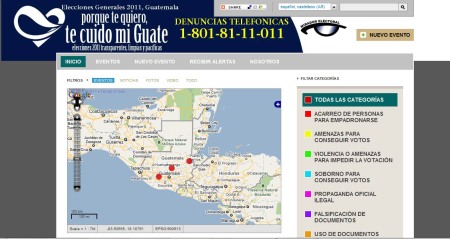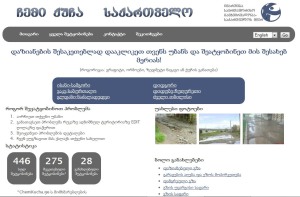After a long hiatus in posting here, it’s finally time to pen some thoughts again on social media and technology use in the fight against corruption.
In the past 1 ½ years or so I have worked extensively with the fast growing number of Transparency International Chapters operating so-called Advocacy and Legal Advice Centres (ALACs) in more than 45 countries. These centres typically operate toll-free hotlines, encouraging citizens to report corruption. They then provide free advice and support to people to empower them to address their grievances. Depending on context, this may consist in awareness raising, basic orientation on how to report public corruption, support for example in helping file access to information requests, more advanced legal advice or, in a few cases, legal representation. Using the case-files and the datasets on corruption generated through the citizen complaints (almost 100.000 in 46 countries to date), they also push for key legislative changes and as well as the proper application of existing rules (often a key concern).
In the last few months, I have begun to sense an accelerating uptake of social media tools to take this work to scale, reach more people and extend it to particular contexts such as election monitoring. Not all of the following examples are directly related to the legal advice work TI does, but in one way or another they all aim at engaging people in our work. Of course, while I am focusing on examples from within TI, there are many many more inspiring examples out there from across the global transparency movement. Global Voices’ Technology for Transparency is a great place to start exploring them. Also, I think @georg_neu might soon post here on his impressions from the Transparency Camp with lots of more great ideas and projects.
So here’s some of the stuff TI Chapters are currently working on. To be sure, this does not pretend to be a complete list – it’s really more a collection of examples that I came across in the last months:
Online citizen corruption reports
While ALACs have been receiving complaints online for years now, in many contexts this is becoming a more and more important channel for citizen engagement against corruption (the stunning growth of ipaidabribe.com seems to point in this direction, too). In TI, the importance of “online” as an engagement channel is increasingly reflected in the design of ALAC and related webportals. More and more, these go beyond offering a simple complaints form and seek to provide routine advice and orientation concerning official redress mechanisms. See for example TI Russia’s askjournal.ru site and TI Hungary’s five-step interactive guide to understanding if a complaint may be related to corruption and whether they can potentially assist with it.

The Guatemalan election-related complaints platform
A more recent approach that a number of TI Chapters are beginning to use in a number of places is Ushahidi based SMS and online reporting of corruption and related abuses. TI Panama’s mipanamatransparente.com platform (mentioned a while ago on this blog) was originally conceived to enable investigative journalist to identify important cases of abuse to then report on. [Update: read about a recent case here]. Now, the Chapter is in the process of establishing additional capacity to provide legal advice and other types of support to those reporting corruption, looking at closely integrating this with the existing platform. In Guatemala, Acción Ciudadana and their civil society partners have begun to use Ushahidi combined with a traditional hotline as part of their election monitoring initiative. TI Macedonia, one of the Chapters who pioneered legal advice services in the TI movement, is also about to launch a similar platform for corruption reporting online. The beta can already be accessed here.
Citizen reports: Taking support and advice to scale

FixMyStreet Georgia
One of the key challenges in helping individuals and communities address corruption and related issues is scale – many people are suffering from corruption and its effects. Unfortunately, time and resources limit the possibility of engaging directly with everybody affected. However, it’s key to engage many more people in identifying and solving problems. This is where TI Russia’s online approach comes in. Realising that many concerns can be potentially resolved by people themselves, they are piloting a site in the city of Vladimir that aims at crowd-sourcing not only the reporting of problems, but also solutions. On Cormap (see an explanatory presentation here), citizens report problems such as defunct street lighting, illegal waste dumping etc, point out who’s responsible and suggest solutions on a public portal, providing an incentive for the public authorities to respond. Another great example in a similar vein is TI Georgia’s local implementation of the FixMyStreet platform. They also run an excellent blog on corruption issues in the country.
Using technology for transparency
One of those in the TI movement who’ve been interested in using technology for transparency for a while are Poder Ciudadano in Argentina. Their Money and Politics platform enables citizens to access previously impenetrable datasets on the funding of parties and election candidates. Recently, they’ve been co-hosting a Hackathon event, engaging programmers and data experts to develop a tool that would make datasets about government spending on official advertising more transparent to the public. I am quite excited to hear about the results, and I am following them on Twitter to learn more. In the Slovak Republic, the TI Chapter also does amazing work, making datasets, rankings and comparisons on local government transparency available in an attractive and easily accessible way. Another great project of TI Slovakia compares data on government spending with information about the contractors.
Facebook, Twitter et al.
Facebook too is increasingly used by TI Chapters to promote citizen engagement against corruption online. TI Papua New Guinea’s ALAC page is a great example, and our colleagues from TI Bosnia and Herzegovina, recently told us that Facebook is becoming the most effective channel to publicise their legal aid services. Here are a number of other TI Chapters on Facebook, whose groups I really like: Peru (check out their lupita.pe anti-corruption campaign blog, too) , Ireland and Lithuania. And, of course there’s a growing number of TI Chapters raising awareness about corruption and engaging people on Twitter. Here’s a list of tweeting Chapters.
[Update] I just saw the ALAC in Argentina use Twitter to solicit complaints. Probably not the first time it happened, but the first time I am seeing it live!
@poderciudadano Recibimos denuncias sobre violencia electoral: 0800-222-2684 o skype (usuario:centroalac) http://ow.ly/4QlKo #elecciones2011
Some thoughts on future steps
While not all strictly related to the legal advice centre work that I am mostly involved in, I do see these examples of technology and transparency initiatives as closely related. For one, I think there’s huge potential for integration for on and offline tactics. When making public information more transparent and accessible, the “report abuse” button ought to be right next to it! Whether it’s TI, another civil society organisation or a capable public administration (even better!) that then accompanies people who want to take action, the point is this: When we raise awareness, making more information more easily accessible and, based on this, people actually want to act, that’s when there is an opportunity for concrete change.
On the other hand, technology for transparency projects often have a crowd-sourcing element built in from the start. Offline tactics such as providing legal advice can benefit from that too. In particular the idea of platforms that enable people to help one another is quite intriguing. According to context, the technology used will vary, but a whole different scale of reach and impact in terms of empowerment becomes possible at a relatively low cost. This will not make the contribution of the ‘experts’ obsolete in any way. Rather, it will help them understand and focus on those concerns of strongest public interest in changing the systems that permit corruption, while empowering a greater number of people to resolve their own grievances.


